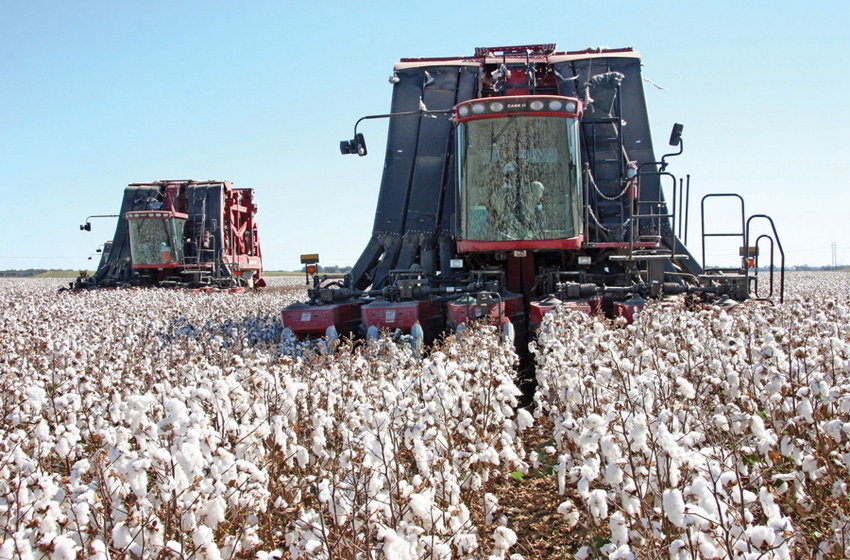October 2, 2015

September was warmer and drier than normal but rain is in the forecast over the next few days. We should be in full-picking-mode after this rain moves through.
Still, there is more to getting back into the field than just waiting for the bolls to dry and ground to hold up. With the adoption of the new module-building pickers, the weight of our equipment has increased to record levels.
Although historical observations have indicated Tennessee soils are much less prone to compaction than soils in some other regions, harvesters of this size were not around when earlier research was conducted. It is, therefore, important to keep in mind the factors which can contribute to soil compaction and attempt to minimize the impact of the “silent thief”.
Dr. Randy Raper, agricultural engineer at Oklahoma State who has worked extensively in the Coastal Plains and Tennessee Valley soils, recently completed a Plant Management Network Seminar on soil compaction, ways to minimize the impact of trafficking fields, and possible ways to address compacted areas.
I bring this up in light of a field visit I made earlier this year in west Tennessee where soybeans had been planted following cotton in a no-till system. The old cotton rows were still visible and every row of soybeans which was planted into a trafficked row middle was severely stunted with signs of nutrient deficiency and water stress.
Investigation with a sharp shooter confirmed a compaction problem in the trafficked middles. Through visiting with individuals present at harvest, it became clear that the field had been picked while the ground was wet and the area of the field most severely compacted had been where the module builder was located.
Since compaction cannot be adequately addressed post-planting, the producer had no legitimate options to ameliorate the stress.
Take home message: With few exceptions, our picking capacity for each farm in west Tennessee far exceeds the cotton acreage. In order to minimize the impact of trafficking fields, keep in mind the potential impacts of trafficking the field when wet, make sure tires are properly inflated before entering the field, and attempt to reduce the number of passes over any given area.
Tyson Raper, Cotton and Small Grains Specialist, University of Tennessee
You May Also Like




